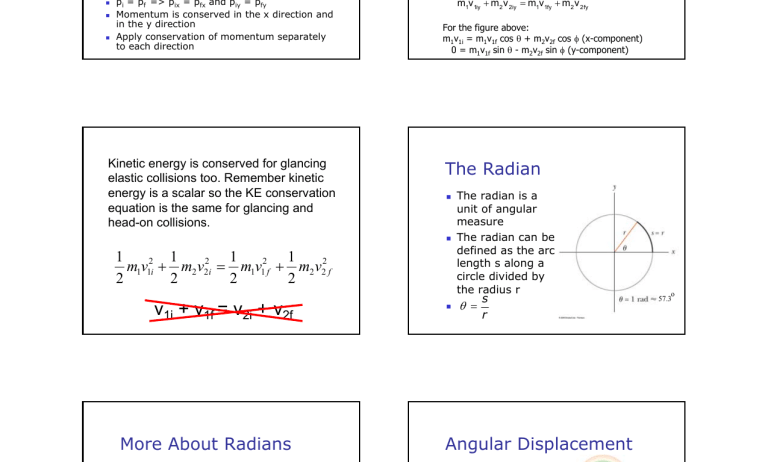Collisions are a common occurrence in our everyday lives, from the gentle bump of a car in a parking lot to the more dramatic impact between two sports players. Among these interactions, glancing elastic collisions offer a particularly intriguing case study in the realm of physics. To delve into the question of whether these collisions conserve energy, it is essential to understand the fundamental principles governing elastic collisions, the definitions involved, and how these principles apply in a variety of contexts.
To begin with, an elastic collision is defined as a collision between two or more bodies in which both momentum and kinetic energy are conserved. This contrasts with inelastic collisions, where momentum is conserved, but kinetic energy is transformed into other forms of energy, such as heat or sound. The conservation laws that apply in such scenarios are rooted in fundamental physical principles, relying on Newton’s laws of motion and the law of conservation of energy.
When examining glancing collisions specifically, it is important to recognize the nuanced mechanics involved. A glancing collision occurs when two objects collide at an angle, rather than head-on. This geometry introduces additional variables, such as the angle of impact and the relative velocities of the colliding bodies. As a result, the behavior of the colliding objects becomes even more fascinating, and a thorough analysis reveals the power dynamics at play.
The most remarkable aspect of glancing elastic collisions is their ability to conserve kinetic energy. When two objects collide elastically, they do not experience permanent deformation, nor do they generate excessive heat. Instead, their mechanical energies before and after the collision remain unchanged. Mathematically, the conservation of kinetic energy in two-dimensional elastic collisions can be represented through a series of equations delineating momentum conservation in both the x and y axes, supplemented by utilizing unit vectors for precise calculations.
In practical terms, this conservation can be seen in various physical scenarios. Consider a game of billiards, where players strike the cue ball, leading to a glancing collision with other balls on the table. The cue ball transfers energy to the object balls, which take off in different directions. Despite the complex interplay of angles and speeds, the total kinetic energy before and after the collision remains the same—each ball conserves the energy it receives, showcasing the principle of elastic collisions in action. Such instances not only enhance our appreciation of game mechanics but also serve as a gateway to understanding conservation principles in broader contexts.
However, the fascination with glancing elastic collisions extends beyond mere demonstrations. The mathematical elegance and predictive power of this physics domain beg deeper inquiry. This interplay of forces and energy conservation conjures questions about real-world applications. For example, in the design of vehicles and safety systems, engineers take into account the principles of elastic collisions when assessing how vehicles interact during crashes. Understanding how energy is transferred facilitates the development of crumple zones and enhancement of passenger safety.
Moreover, glancing elastic collisions appear in environmental contexts as well. Take, for example, interactions between different species within an ecosystem. Many organisms engage in behaviors that mirror these collision principles, whether they are competing for resources or simply avoiding one another. When animals clash or dart around predators, the principles of momentum and energy transfer not only sustain their survival but also shape the biodiversity and adaptability of ecosystems. The implications of energy conservation in such interactions hint at the underlying connections between physics and biological principles.
Despite the elegance of theoretical frameworks, imperfections in real-world conditions cannot be overlooked. While the ideal behavior of elastic collisions serves as a solid foundation for understanding, practical observations often reveal deviations due to friction, sound production, and heat generation. These elements can transform an elastic collision into a partly elastic one, thereby complicating direct applications of the conservation laws. As such, discrepancies in expected outcomes challenge researchers and physicists to unravel the complexities affecting energy conservation, prompting ongoing studies and experimental validations.
As we draw deeper connections, the intersection of glancing elastic collisions and energy conservation poses further philosophical inquiries about the nature of energy itself. When energy transitions from one form to another, it invites reflections on the conservation of resources at a macro scale—particularly in our efforts to promote sustainability and environmental conservation. The idea that energy cannot be created or destroyed, merely transformed, mirrors the need to rethink our consumption habits and resource management in everyday life.
In conclusions drawn from studying glancing elastic collisions, we see that while energy conservation remains a cornerstone of physics, real-world applications demand a nuanced comprehension of the variables at play. These collisions encapsulate broader themes that resonate within the principles of sustainability, impacting various sectors from engineering to biology.
By delving into the complexities of glancing elastic collisions, we can appreciate not only the beauty of physics but also the relevance of these principles in striving for a more sustainable future. Exploring the conservation of energy in these interactions encourages continued curiosity and fosters a deeper understanding of how interconnected forms of energy permeate our everyday existence.








